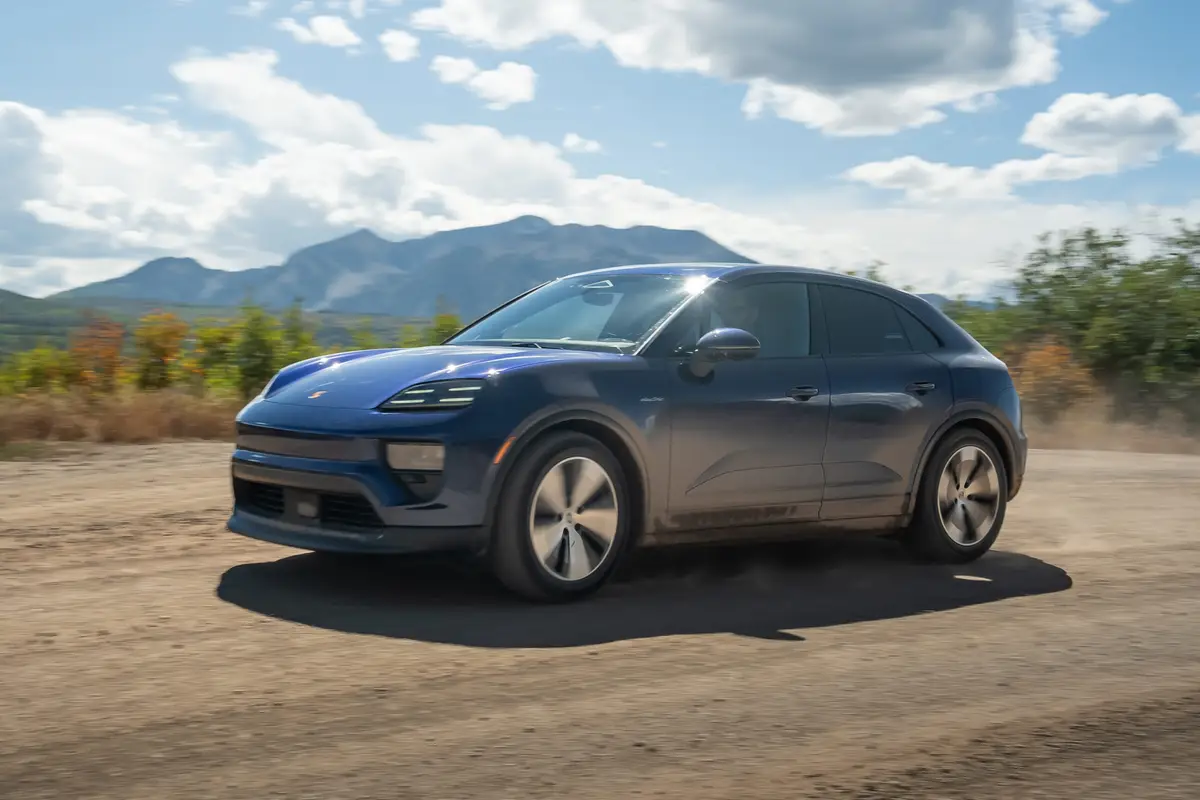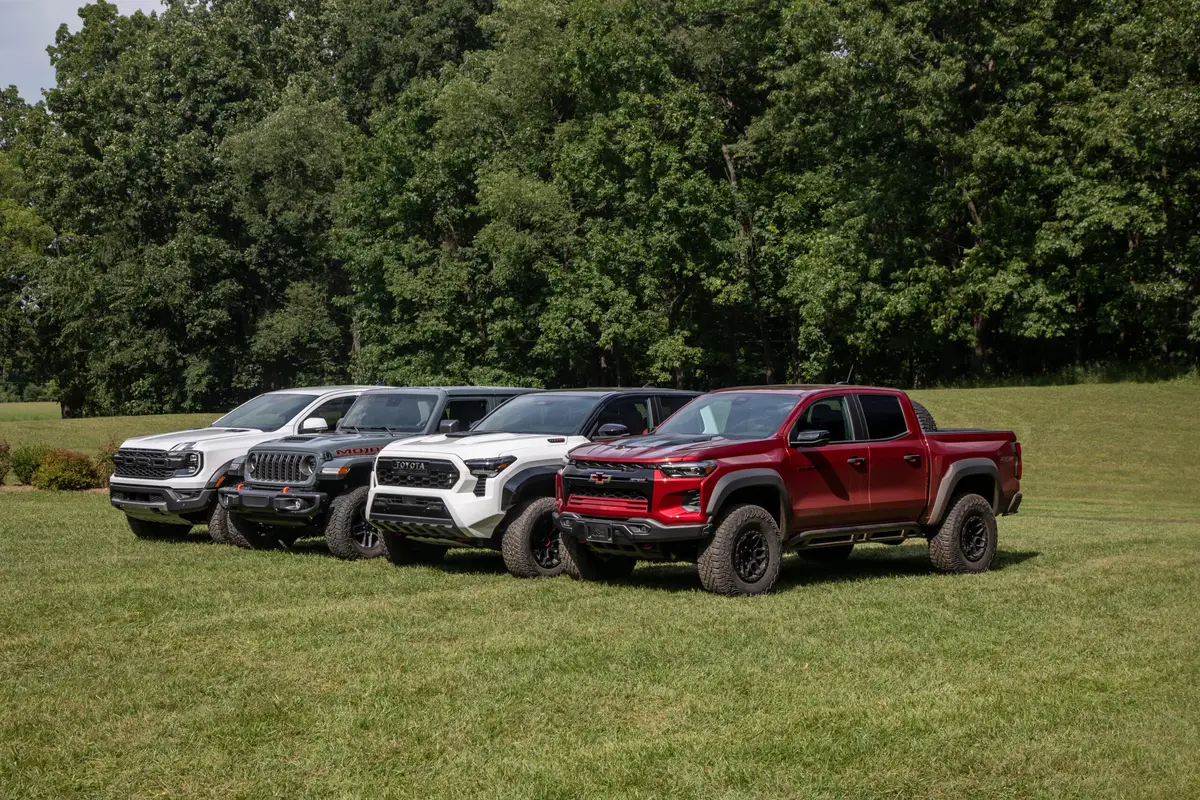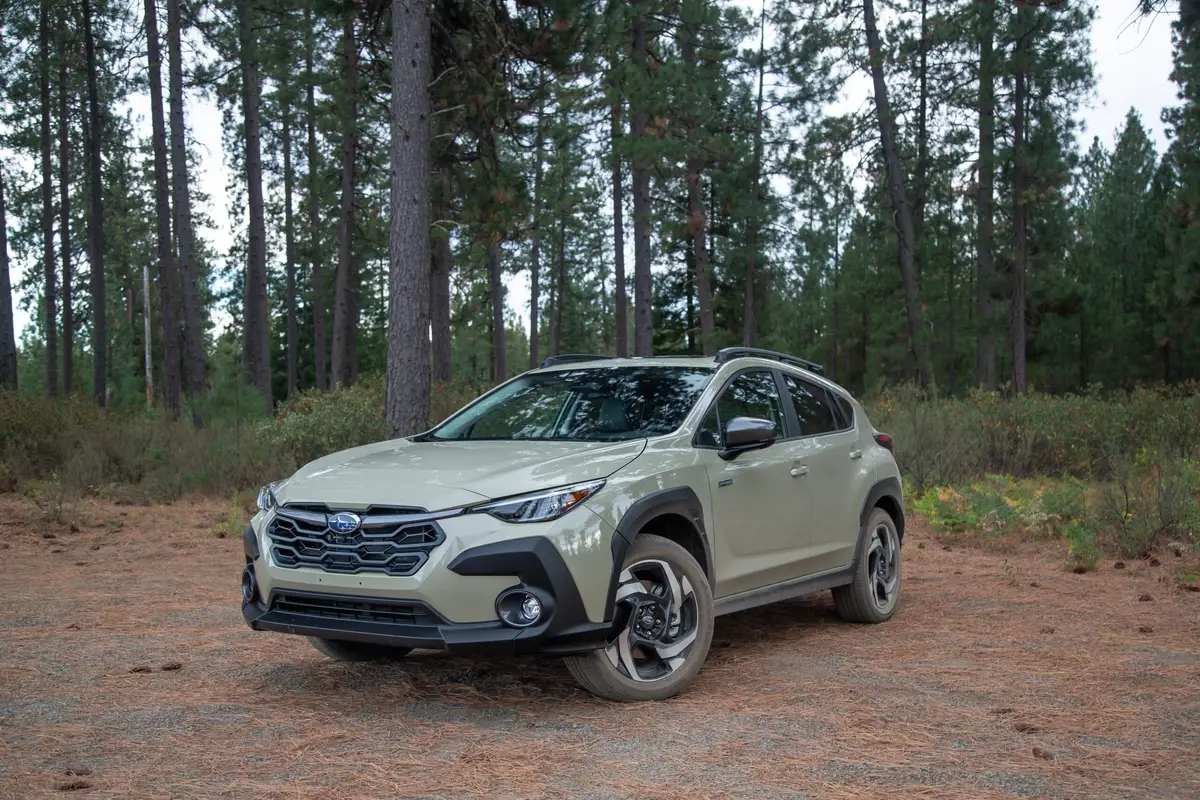2015 Ford F-350 King Ranch: Exclusive Quick Drive
During a recent trip to Detroit to get more background on the different types of rigorous testing the folks at Ford put the 2015 Ford F-150 through, we had the chance to be the first to get inside the freshened 2015 Ford F-350 King Ranch (single rear wheel).
As a quick reminder, the — newly stylized for the 2015 F-150, 2015 Super Duty and 2015 Expedition SUV — offer a richer, premium interior leather; several new colors; and the redesigned King Ranch logo inserted into the center console, floormats and steering wheel. Additionally, all Super Dutys get 20-inch machined aluminum wheels with painted pockets.
Our Ruby Red Metallic F-350 4×4 had 3.55:1 gears, and with an empty load there was little perceived difference from the previous model. That didn't surprise us, because many of the changes to the PowerStroke relate to changing the type of turbocharger and beefing up the bottom end of the engine (crankshaft, dampers, main bearings, oil cooling, etc.) as well as the pistons and head gasket. Additionally, Ford has made a few changes to the six-speed transmission, especially the torque converter, to handle the extra loads. No changes have been made to the axles.
As nice as all this new King Ranch upgrading is, the big news for 2015 is that the and now offers the most horsepower and torque of any full-size three-quarter-ton or one-ton pickup truck in the class. Society of Automotive Engineer ratings for the 6.7-liter OHV V-8 are now 440 horsepower and 860 pounds-feet of torque (just ahead of the Ram Heavy Duty's HO Cummins torque number of 850 pounds-feet). Unfortunately, we weren't able to get our test truck to an engine dyno to verify how the engine performs, but we did get to put a few hundred miles on the truck and gather some impressions.
It's clear Ford has done a mountain of work to keep this modified engine smooth and quiet; in fact, the latter was the big standout in our mind. As the leader in pickup truck interior quietness, Ford has managed to make this truck even quieter. We assume that means been plenty of sound-deadening material has been added around the cab, plugging holes and adding thickness to doors and firewalls. Nothing is changed inside the cabin; the dash and gauge layout is identical to 2014 models.
That was a little disappointing given the fact that one of the big changes in the PowerStroke engine is that it now offers drivers a controllable exhaust brake button with a dedicated Tow-Haul switch (at the end of the column shifter) and an exhaust brake button. We would have liked to have seen some kind of newly available "exhaust brake" screen that let us know how deep or shallow we were using the new feature. The button is a simple on/off control, with a small icon showing up in the information center at the center of the gauge cluster in front of the driver. We're told the turbo does offer some back pressure capabilities even with just the basic Tow/Haul mode engaged, but it becomes much more aggressive in how it operates when the exhaust brake button is pushed on. We can't wait to get a good load in the bed or behind the new PowerStroke to see how the new feature handles a real work load.
One thing that really stood out about this 8,000-pound truck (we weighed it) is how it handled the monster potholes around Detroit. As amazing as the unchanged suspension is at offering a smooth and settled ride on good roads (especially surprising since we were running empty and at 70 mph much of the day), the big potholes were difficult for this heavy-duty hauler to handle, especially when negotiating a slowly arcing turn. Anyone familiar with live-axle suspensions knows this is a small tradeoff for the load-carrying benefits of stiffer springs and stronger axles. Still, it's never fun to feel your undersides go into a bouncing vibration after hitting a series of deep ruts and holes, and feel the grip of the tires disappear and slowly float in one direction or another. That said, we were amazed at how quickly the big, empty truck settled back down, grabbed the road and got us back on course headed in the right direction. After a while we got better at avoiding those nasty obstacles as much as possible.
Over the course of our drive — which included some two-lane, winter-rutted back roads as well as freeway cruising — we averaged more than 14 mpg and never had any trouble keeping up with traffic or passing the occasional semi. For fun we decided to hit a local drag way where we got some time on the quarter-mile track. Although all our runs were not "officially" timed, we figured they were somewhere around 16.5 seconds at around 88 or 89 mph (we did fold the mirrors into the doors). This compares pretty well with the last Super Duty we track-tested that ran 17.5 seconds at 83 mph. Unfortunately, that was an F-350 dualie with 3.73:1 axle gears — not exactly apples to apples. Still, the truck ran strong and quiet and seemed to prefer running in Drive with the Tow/Haul mode.We could never get good times manually shifting; it definitely felt like the computer was confused on those runs.
Our test King Ranch priced out at $66,510, which includes a destination charge of $1,195. Base price for the F-350 SRW King Ranch 4×4 crew cab is $56,090 but our unit did have the PowerStroke, locking rear differential, extra skid plate, dual alternators, up-fitter switches, a spray-in bedliner, an engine block heater and special paint. It certainly wasn't inexpensive, but it definitely was a fun ride.
To see a pricing sheet of the standard and optional equipment on our test unit (although the truck is so new it does not have actual pricing), .
Cars.com images by Mark Williams

Featured stories





